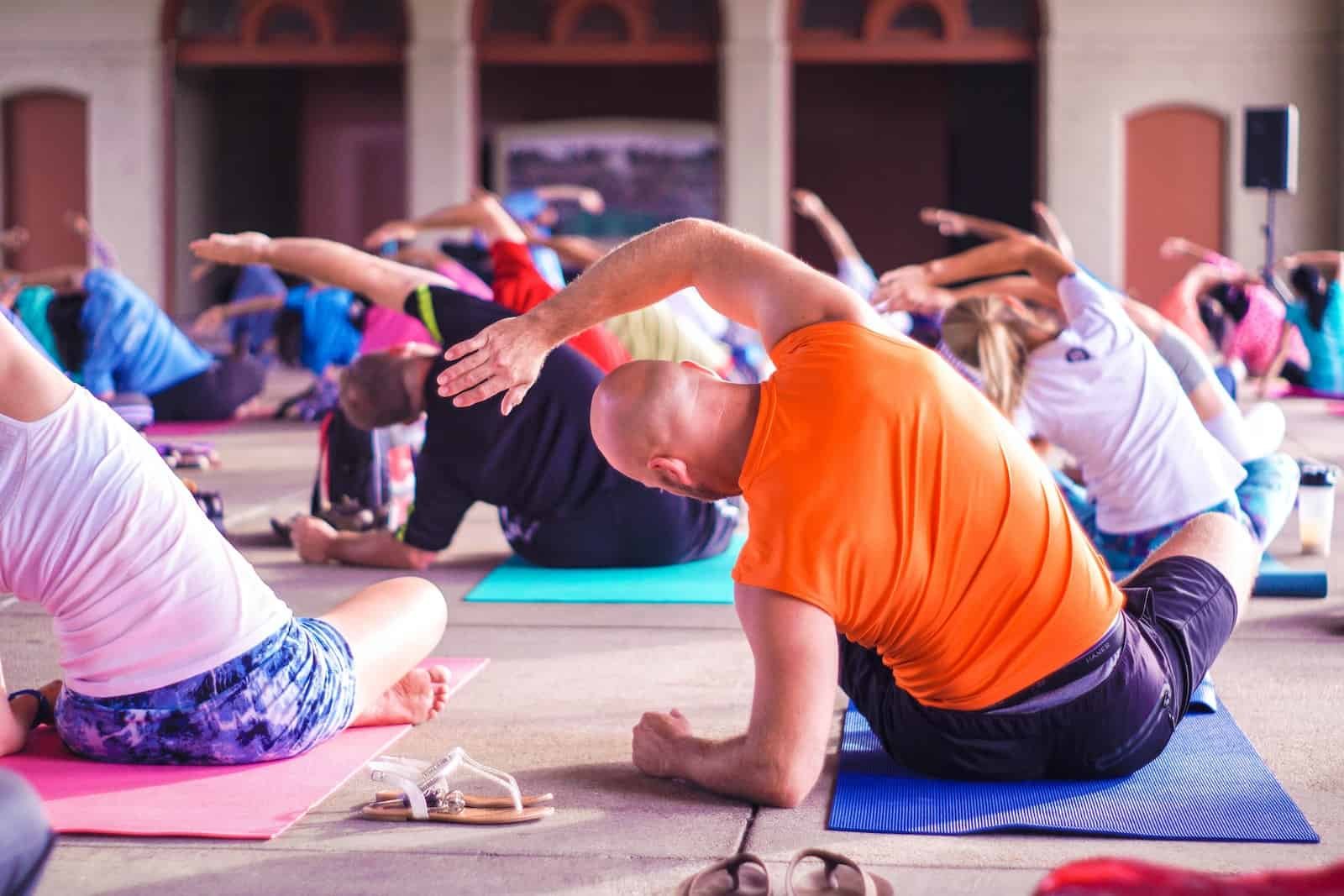The Benefits of Adding a Yoga Routine to Your Daily Schedule

Wellness Fixation is reader supported, meaning I may earn a small commission if you purchase something through my links at no extra cost to you. Thanks for your support! Learn more
The Benefits of Adding a Yoga Routine to Your Daily Schedule
Are you feeling stressed, tired, or just generally out of balance? It’s time to consider adding a yoga routine to your daily schedule. Not only can it help improve your physical health and flexibility, but also provide numerous mental benefits such as reducing anxiety and improving focus. In this post, we’ll dive into the many benefits of incorporating yoga into your daily routine and how it could transform both your body and mind for the better!
What are the benefits of yoga?
When it comes to finding a workout that offers a little bit of everything, it’s difficult to beat yoga. Not only is yoga an excellent way to promote flexibility and physical fitness, but it also has a number of mental and emotional benefits. If you’re thinking about adding yoga to your daily routine, here are just a few of the ways it can improve your life:
1. Yoga can help reduce stress and anxiety.
If you’re looking for a way to relax and de-stress, yoga may be the perfect solution. Numerous studies have shown that yoga can help reduce stress and anxiety by promoting mindfulness and relaxation.
2. Yoga can boost your mood and energy levels.
In addition to reducing stress, yoga can also help improve your mood and increase your energy levels. One study found that regular yoga practice was associated with significantly increased levels of energy and vitality.
3. Yoga can help you sleep better.
If you have trouble sleeping, yoga may be able to help. One study found that people who practiced yoga for at least 30 minutes per day slept better than those who didn’t practice yoga at all. Yoga can also help reduce insomnia by promoting relaxation and improving sleep quality.
How can you start practicing yoga?
When it comes to starting a yoga practice, the most important thing is to find a class or instructor that feels right for you. There are many different styles of yoga, so it’s important to try out a few different classes before settling on one. Once you find a class you like, stick with it for at least a few weeks to give yourself time to learn the basic poses and get into a regular routine.
If you’re new to yoga, start with a beginner’s class or an easy level class. As you get more comfortable with the basics, you can move up to a more challenging level. Don’t be afraid to ask your instructor for help or modifications if you need them.
Most importantly, listen to your body and breath during your practice. If something doesn’t feel right, stop and rest. Remember that yoga is not about competition or achieving perfection. It’s about connection – connecting with your body, mind, and breath.
What are some simple yoga poses for beginners?
If you’re new to yoga, start with these 10 basic poses. Once you’ve mastered them, you can move on to more challenging variations.
1. Mountain Pose (Tadasana)
Mountain pose is the foundation of all standing poses. It’s a great way to learn proper alignment and to experience the centering of your breath and body.
2. Tree Pose (Vrksasana)
Tree pose strengthens your legs and ankles while improving your balance and concentration. It’s also a great way to stretch your inner thighs.
3. Warrior I (Virabhadrasana I)
Warrior I is a powerful stance that builds strength in your legs, hips, and core while stretching your chest and shoulders. It also helps improve balance and coordination.
4. Warrior II (Virabhadrasana II)
Warrior II is similar to Warrior I, but with your back leg extended behind you in a lunge position. This pose also helps build strength in your legs, hips, and core while stretching your chest and shoulders. In addition, it helps improve balance and coordination.
How often should you practice yoga?
Assuming you would like content for a blog titled “The Benefits of Adding a Yoga Routine to Your Daily Schedule”:
Yoga has many benefits, including improving flexibility, building strength, reducing stress and anxiety, and promoting better sleep. But how often should you practice yoga to reap these rewards?
The frequency of your yoga practice depends on several factors, including your goals, your schedule, and your level of experience. If you’re just starting out, you may want to practice three to four times per week. As you become more experienced, you can cut back to two or three times per week. And if you’re trying to maintain your current level of fitness, one yoga class per week may be sufficient.
Of course, the best way to find out what works best for you is to experiment. Start with a schedule that feels doable, and then adjust as needed. Remember that even a short yoga practice can provide benefits; so if time is tight, don’t be discouraged—every little bit counts!
Where can you find more information about yoga?
If you’re interested in adding yoga to your daily routine, there are a few things you should keep in mind. First, make sure to find a class that’s right for your level of experience. There are beginner, intermediate, and advanced classes available at most studios. Once you’ve found a class that’s suitable for you, be sure to arrive early and introduce yourself to the instructor. This will help them give you the best possible experience during the class.
In addition to taking classes, there are many other great resources available if you want to learn more about yoga. There are plenty of books, videos, and websites that can teach you the basics of yoga and help you get started with your practice. Once you’ve learned the basics, you can start exploring different styles of yoga and finding the ones that work best for you.
Conclusion
We hope this article has helped you understand the many benefits of incorporating a yoga routine into your daily schedule. With regular practice, yoga can help improve physical and mental wellbeing, reduce stress levels and provide an overall sense of relaxation. Whether it be for ten minutes or an hour each day, making time to do yoga is something that everyone should consider in order to live a healthier life. So what are you waiting for? Get on your mat today and give yourself the gift of self-care!





